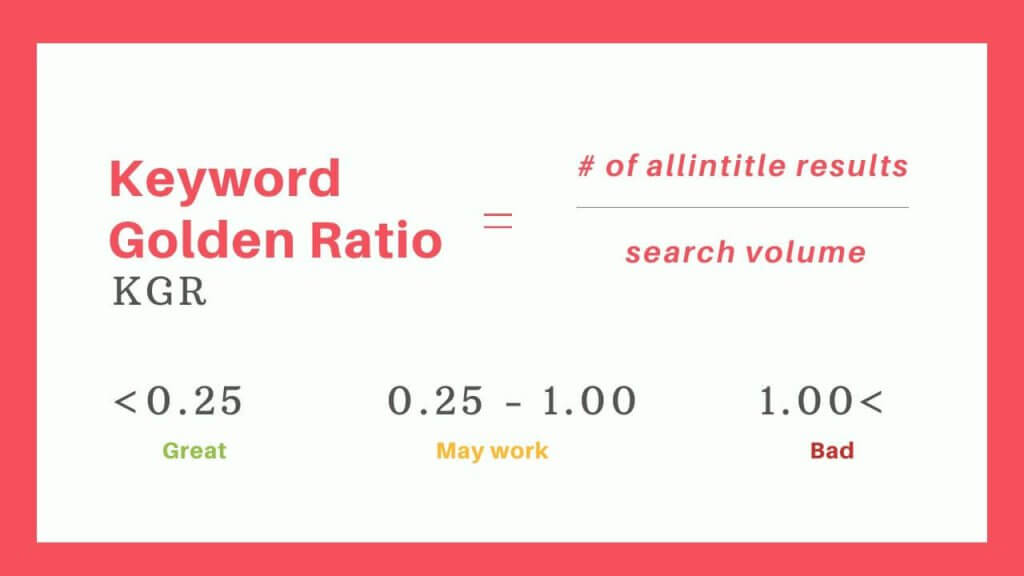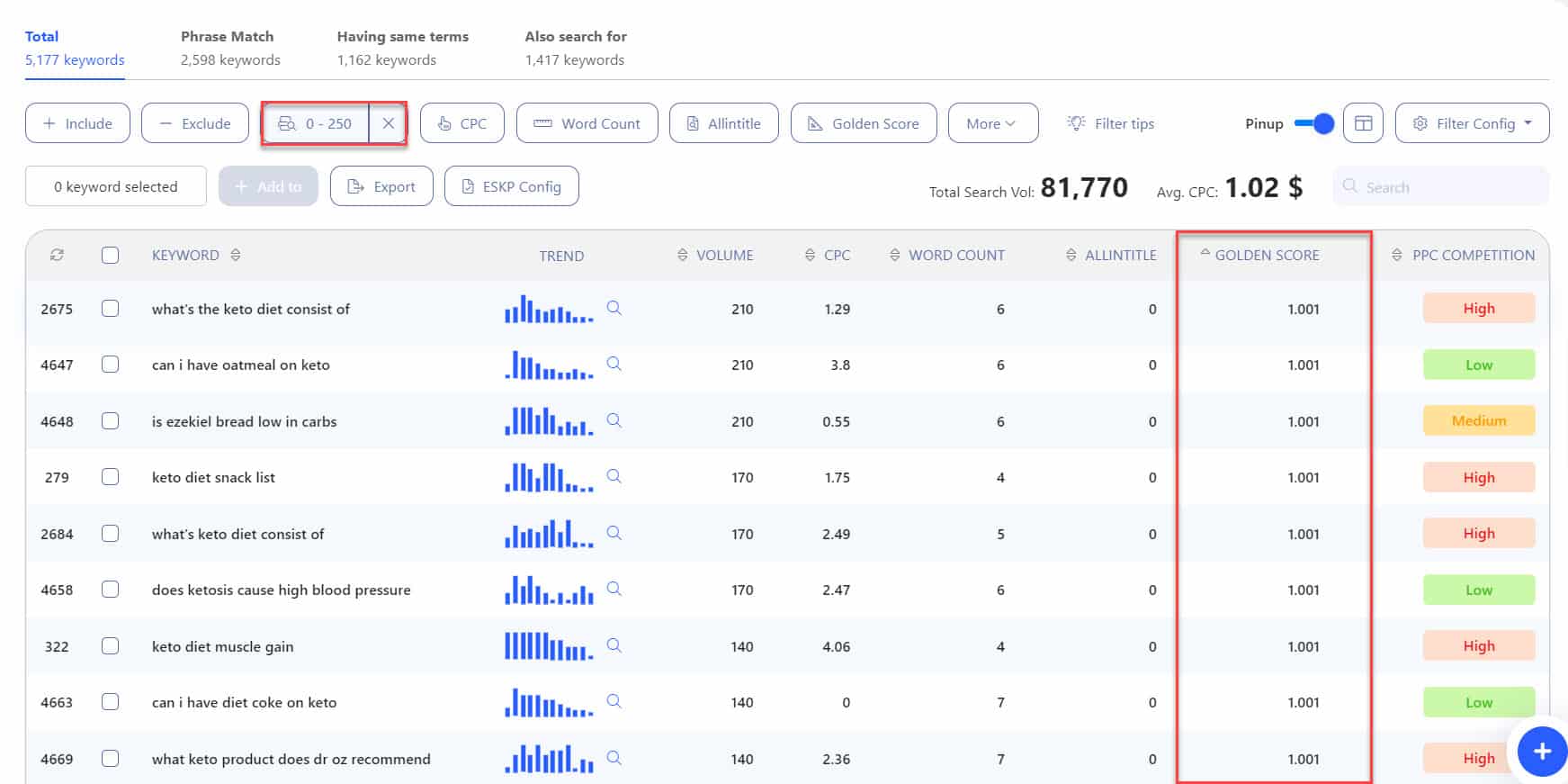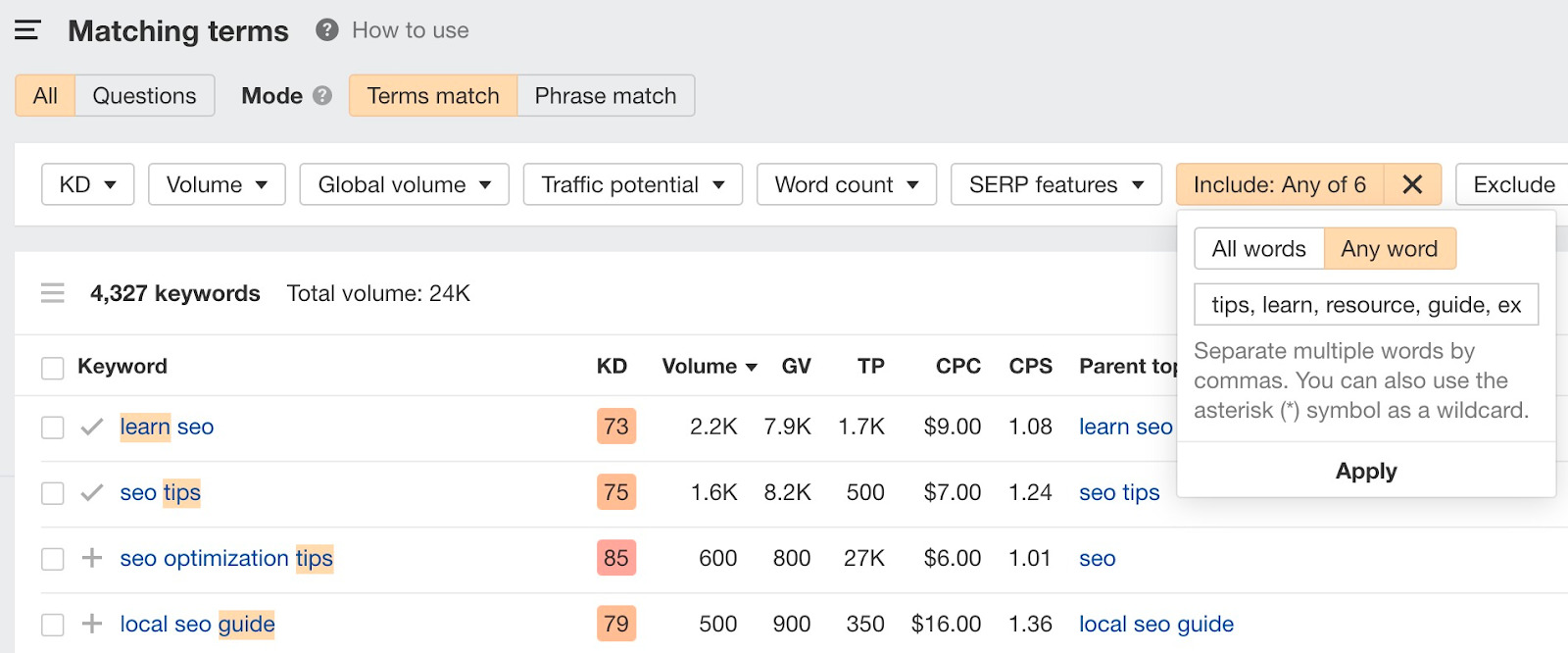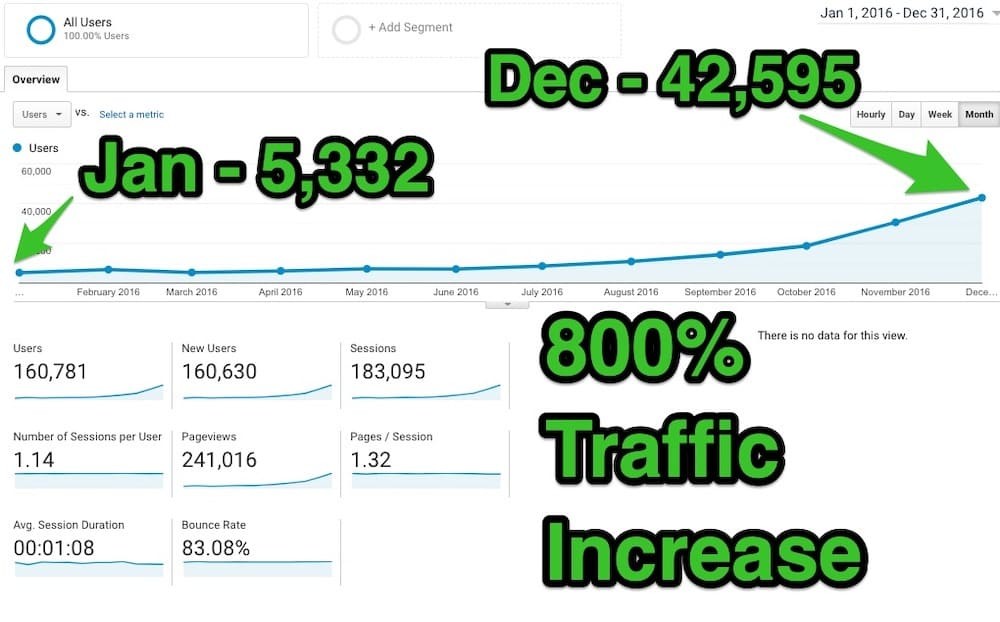Do you want to increase your website’s visibility on search engine result pages? If so, then you need to learn about the Keyword Golden Ratio (KGR). KGR is a simple yet powerful tool that can help you optimize your content for maximum exposure. In this blog post, we’ll discuss what KGR is, how it works, and how it can benefit your website.

- What is the Keyword Golden Ratio (KGR)?
- Why is the KGR Important?
- How to Calculate a Keyword’s KGR Score?
- Benefits of Optimizing Your Content for KGR
- How to Identify Low, Medium and High Competition Keywords
- Understanding Search Intent with KGR
- Tips for Choosing the Best Long Tail Keywords
- Crafting Content for Each Stage of the Buyers Journey
- Strategies for Boosting Your Organic Search Performance with KGR
- Measuring Content Performance with Analytics Tools
What is the Keyword Golden Ratio (KGR)?
The Keyword Golden Ratio (KGR) is a data-driven approach created by Doug Cunnington of Niche Site Project for finding long-tail keywords that are underserviced and easier to rank on page # 1. It compares the search volume to the number of results for that specific keyword to identify keywords without much competition. This can be used to target low-hanging fruit and capitalize on increased website traffic, higher rankings and improved revenue. KGR is an invaluable tool for SEO professionals looking to optimize their website's performance in search engine results pages.

Why is the KGR Important?
The Keyword Golden Ratio (KGR) is an important tool for website owners looking to rank quickly and efficiently for their chosen keywords. KGR compares the search volume of a keyword with the number of results for that keyword, allowing website owners to identify keywords which are underserved and therefore easier to rank for. By utilizing KGR, website owners can easily identify low-competition keywords that have greater potential demand. This allows them to write content around those specific topics and maximize their chances of ranking higher in search engine result pages (SERPs). KGR is especially beneficial when used alongside other SEO tactics such as link building, technical SEO, and content marketing. All these tactics combined can help ensure a website's success in organic search engine rankings.

How to Calculate a Keyword’s KGR Score?
The Keyword Golden Ratio (KGR) is an effective way to identify keywords that are underserved on the internet. It's calculated by dividing the keyword's monthly search volume by the number of “allintitle” keyword results that appear in Google search engine result pages. To calculate a keyword’s KGR score, take its monthly search volume and divide it by the number of “allintitle” results for that keyword phrase. If the ratio is higher than 1, then it means there are more searches than results for this particular keyword; this indicates that it has potential as an untapped market. On the other hand, if it is lower than 1, then there are more results than searches, suggesting this isn't a good option.
For example, if a key phrase has 250 monthly searches and 10 “allintitle” results, its KGR would be 25:1 (250/10). This means that there are 25x more searches than titles containing this specific key phrase; making it a prime opportunity to explore further.
Ultimately, using KGR can help you identify keywords with greater potential and improve your website rankings in the long run. You can also use

Benefits of Optimizing Your Content for KGR
The Keyword Golden Ratio (KGR) is a data-driven strategy for finding long-tail keywords that are underutilized in Google search. It helps site owners quickly generate organic traffic by targeting low competition keywords. With the KGR method, new site owners can get quick wins by targeting keywords with more search volume compared to higher competition ones.
Utilizing the golden ratio can help you determine which keywords to target for your website or blog. If you're able to find a keyword with a high KGR, then you have an opportunity to rank well in the top 100 results and boost organic traffic to your website. This could ultimately lead to increased affiliate revenue and greater success for your online business.
The KGR method also allows you to find user intended phrases that convert into leads or sales on your site. You can use this data-driven approach to identify terms or phrases that are not as common among competitors, helping you establish yourself as an authority in the field and draw more customers over time.
Optimizing content using KGR is an effective way of driving organic traffic and getting ahead of the competition. The Keyword Golden Ratio allows businesses and website owners alike to target low competition, high

How to Identify Low, Medium and High Competition Keywords
The Keyword Golden Ratio (KGR) is a popular tool among digital marketers and SEO experts for identifying high-quality keywords. It uses search volume and competition data to measure the difficulty of ranking for each keyword, which can help you decide which keywords to target in your SEO efforts. Low competition keywords represent less effort required for ranking success, while high competition keywords may require more resources to rank higher in search engine results pages (SERPs).
To use KGR, you must first determine the total number of search results and the average monthly search volume for each keyword phrase that you’re targeting. From there, divide the average monthly search volume by the total number of results to get your KGR score. A KGR score below 0.25 indicates a low-competition keyword; 0.25 – 0.5 is medium competition; and above 0.5 is considered high competition.
In addition to KGR scores, it’s important to consider other factors such as the quality of content on existing SERP results when deciding whether or not to target a particular keyword phrase. If existing SERP content looks sparse or outdated, then targeting that term may be worthwhile as it could be easier than competing

Understanding Search Intent with KGR
Keyword Golden Ratio (KGR) is a powerful tool for understanding search intent and finding keywords with the highest potential for ranking on Google. It helps to identify low competition keywords that have enough search volume to make it worth ranking for them. KGR is based on the idea that lower search volumes tend to rank faster, and therefore should be targeted first when looking for keywords to rank for.
When using KGR, you can find keywords with monthly search volumes below 250 (which are considered low competition) and match them against the number of results returned by an “allintitle” query in Google. If the ratio of results to searches is greater than 1:1, then that keyword has potential to be ranked easily as there are fewer competing pages on the SERPs.
In addition to targeting low-competition phrases, KGR also helps you understand user intent better by providing insights into what people are actually searching for. By analyzing which phrases have high ratios or certain keyword trends associated with them, you can create content that speaks directly to user needs instead of creating generic content that covers topics without any context or relevance.
Overall, Keyword Golden Ratio is an excellent tool for finding easy-to-

Tips for Choosing the Best Long Tail Keywords
Choosing the best long tail keywords can be a challenge, but with the help of the Keyword Golden Ratio (KGR) it can be made much simpler. KGR is an effective data-driven strategy for finding low search volume long-tailed keywords that are underutilized in Google search and can help you rank in top 50 (or better) within a short period of time.
The Keyword Golden Ratio theory was developed to target long tail keywords that are overlooked by the competition and takes into account various factors like search volume, keyword difficulty, competition level and other metrics. It helps you identify those underutilized long tail keywords that few competitors have noticed, allowing you to get ahead of them in terms of rankings.
Since long-tail keywords have less searches and less competition around them, they’re going to be your best bet if you want to rank quickly without having to spend too much time or resources optimizing your content for these words. To find these profitable yet elusive targets, use a tool such as Ahrefs or SEMrush to get an idea of which phrases might have potential. Then analyze each phrase manually with KGR’s formula:
Take the lowest search volume keyword from

Crafting Content for Each Stage of the Buyers Journey
Creating content for each stage of the buyer's journey is essential for effective digital marketing and SEO. The Keyword Golden Ratio (KGR) is a great way to identify keywords that are underserved on the internet and can be used to craft content tailored to your audience.
The KGR ratio compares the search volume to the number of results for that specific keyword, allowing you to select low competition terms with high monthly search volume. This method helps you target consumers at all stages of their buying journey, from awareness through consideration and conversion.
When crafting content targeting a KGR phrase, remember that your goal is to nudge prospects down the buyer's journey until they convert. Keep it concise, easy-to-read, and accurate; use visuals whenever possible; include links; consider including a call-to-action; create internal links for further exploration; optimize meta descriptions; and be sure to monitor your rankings over time.
Using KGR in combination with other SEO techniques can help you maximize visibility and drive qualified leads into your sales funnel more quickly – ultimately increasing profits for your business!

Strategies for Boosting Your Organic Search Performance with KGR
Keyword Golden Ratio (KGR) strategies are an effective way to boost your organic search performance. KGR is a data-driven approach that compares the search volume to the number of results for a given keyword, allowing you to identify keywords with low competition and high potential. This method can help you rank in the top 50 or better within a short amount of time, increasing your organic traffic and potentially helping you generate more revenue.
KGR helps to uncover hidden gems; these are keywords that have been overlooked by most major search engines. By targeting low competition phrases, you can quickly increase the visibility of your website, making it easier for people to find what they are looking for. Additionally, KGR allows you to determine which keywords have the most potential for success so that you can focus on optimizing those pages first.
For successful implementation of KGR strategies, it’s important to keep an eye on keyword difficulty and competition levels as well as look at trends over time. If KGR is less than 0.25 then chances are good that you will rank in Google’s top 100 once your page is indexed; if it falls between 0.25 and 1 then there is still potential but ranking higher

Measuring Content Performance with Analytics Tools
The Keyword Golden Ratio (KGR) is a powerful tool for measuring the performance of content on the internet. It helps to identify long-tail keywords that are being underutilized by your competition, so you can leverage them to gain an edge in your search engine rankings. KGR measures the ratio of search volume to the number of results for a particular keyword, allowing you to determine which keywords are least competitive and most likely to bring in high organic traffic.
With KGR, you can also assess how well your content is performing by comparing its current ranking position and estimated monthly searches with those of similar pieces of content. By using analytics tools like Google Search Console or Ahrefs, you can see how well each piece is doing on a keyword-by-keyword basis. This will give you valuable insights into which topics are resonating with your audience, as well as which ones need more attention and optimization. Additionally, tracking keyword rankings over time gives an indication of whether or not your SEO efforts have been successful.
Overall, leveraging KGR for measuring content performance is an effective way to stay one step ahead of your competitors when it comes to organic search engine rankings and organic traffic generation. Knowing which keywords are least



Leave a Comment